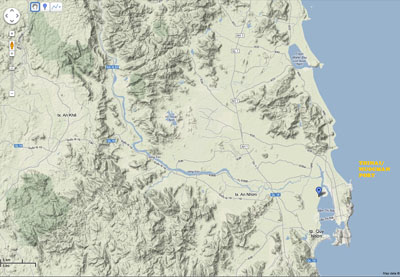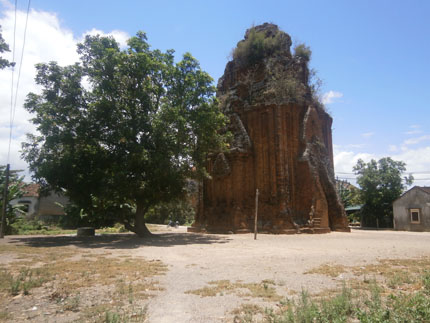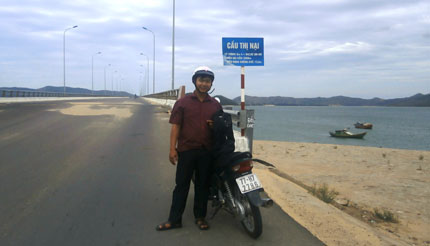
Map of the port of Thi Nai / Nuoc Man (Map by Do Truong Giang). View larger version here.
The Port of Thi Nai (in Nagara Vijaya, from 12th to 15th Centuries CE)
From the middle of 12th to the late 15th centuries CE, Thi Nai took over the role of Dai Chiem/Hoi An port and served as the principal port on the coast of Campa. Thi Nai was not only a contact point between the sea and land but also an entrepot of regional sea trade. Campa’s Thi Nai had become a familiar destination for merchant ships on their regional routes and especially, it had become a strategic connecting point between China and the Southeastern and Southwestern regions of Asia. The prosperity of Thi Nai over a long period of time contributed significantly to the development of the nagara of Vijaya. Sustaining and developing a large economic center, nagara Vijaya was able to dominate its adjacent rivals and emerged as the economic, political and religious center of the entire mandala of Campa.
After the expedition led by King Lê Thánh Tông in 1471, nagara Vijaya, and consequently Thi Nai Port, gradually belonged to the Viet people and were annexed into the territory of Đại Việt. As a consequence, over a long period of time, Thi Nai and those ports in the central region of Vietnam gradually lost their role as major entrepots in the Indian Ocean maritime networks. The mercantile port of Thi Nai came into a period of decline and would not recover its role until the time of the Southern Nguyen Lords.

Binh Lam Tower nearby Thi Nai Port (Photo by Do Truong Giang, 2012). View larger image of the tower here.
The port of Nuoc Man (During Nguyen Lords Period, 17th-19th centuries CE)
The Nguyen Lords in the Southern Vietnam, during their southward territorial expansion, chose foreign trade as the foundation to maintain their authority and enhance their importance in the region. Between the 16th and 18th centuries, there was a transformation of Cham mercantile ports into Vietnamese ones in the case of Hoi An, Co Luy and Nuoc Man. In a new historical context, Nuoc Man (which replaced the former name of Thi Nai, once served as the principal port of Campa), was reduced to be a regional commercial center during the period of the Southern Lords of Nguyen. Hoi An (known as Dai Chiem Port in Campa era) took over Thi Nai’s position as the most important sea port due to the advantages it possessed as well as other political and economic reasons. Nevertheless, Nuoc Man had played an important role in Nguyen Lords’ southward expansion. In addition, it had served as the connecting point between the sea and the land and between the fertile highlands and the eastern lowlands and coastal areas. Though no longer holding the status of the primary port as Thi Nai used to, Nuoc Man had its own missions and historical role in the Vietnamese development of foreign trade and their southward territorial expansion.

Doing fieldwork in Thi Nai port (Photo by Do Truong Giang, 2012).
Previous
